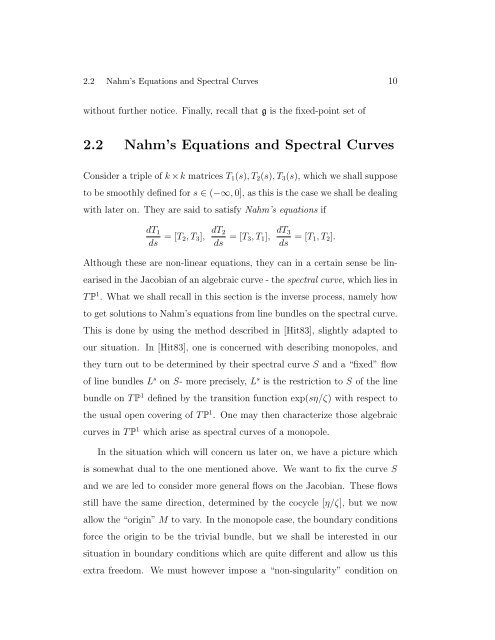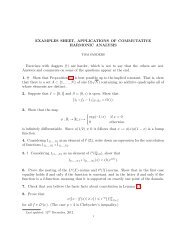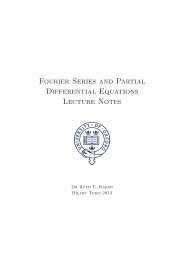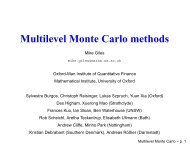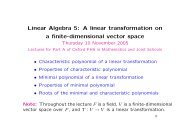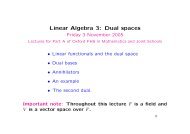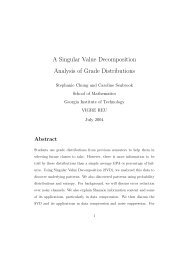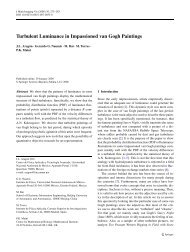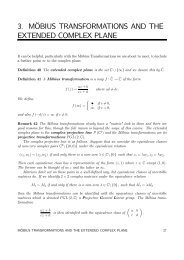Construction of Hyperkähler Metrics for Complex Adjoint Orbits
Construction of Hyperkähler Metrics for Complex Adjoint Orbits
Construction of Hyperkähler Metrics for Complex Adjoint Orbits
You also want an ePaper? Increase the reach of your titles
YUMPU automatically turns print PDFs into web optimized ePapers that Google loves.
2.2 Nahm’s Equations and Spectral Curves 10<br />
without further notice. Finally, recall that g is the fixed-point set <strong>of</strong><br />
2.2 Nahm’s Equations and Spectral Curves<br />
Consider a triple <strong>of</strong> k × k matrices T1(s), T2(s), T3(s), which we shall suppose<br />
to be smoothly defined <strong>for</strong> s ∈ (−∞, 0], as this is the case we shall be dealing<br />
with later on. They are said to satisfy Nahm’s equations if<br />
dT1<br />
ds = [T2, T3], dT2<br />
ds = [T3, T1], dT3<br />
ds = [T1, T2].<br />
Although these are non-linear equations, they can in a certain sense be lin-<br />
earised in the Jacobian <strong>of</strong> an algebraic curve - the spectral curve, which lies in<br />
T P 1 . What we shall recall in this section is the inverse process, namely how<br />
to get solutions to Nahm’s equations from line bundles on the spectral curve.<br />
This is done by using the method described in [Hit83], slightly adapted to<br />
our situation. In [Hit83], one is concerned with describing monopoles, and<br />
they turn out to be determined by their spectral curve S and a “fixed” flow<br />
<strong>of</strong> line bundles L s on S- more precisely, L s is the restriction to S <strong>of</strong> the line<br />
bundle on T P 1 defined by the transition function exp(sη/ζ) with respect to<br />
the usual open covering <strong>of</strong> T P 1 . One may then characterize those algebraic<br />
curves in T P 1 which arise as spectral curves <strong>of</strong> a monopole.<br />
In the situation which will concern us later on, we have a picture which<br />
is somewhat dual to the one mentioned above. We want to fix the curve S<br />
and we are led to consider more general flows on the Jacobian. These flows<br />
still have the same direction, determined by the cocycle [η/ζ], but we now<br />
allow the “origin” M to vary. In the monopole case, the boundary conditions<br />
<strong>for</strong>ce the origin to be the trivial bundle, but we shall be interested in our<br />
situation in boundary conditions which are quite different and allow us this<br />
extra freedom. We must however impose a “non-singularity” condition on


